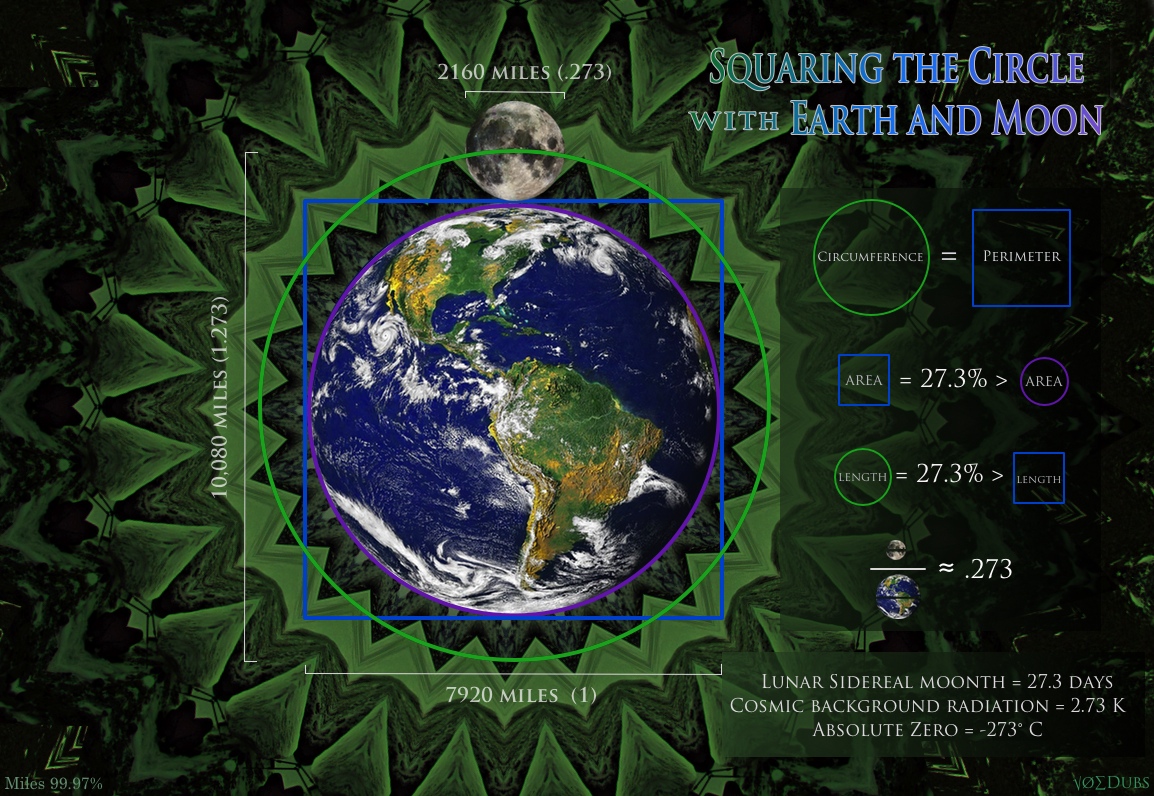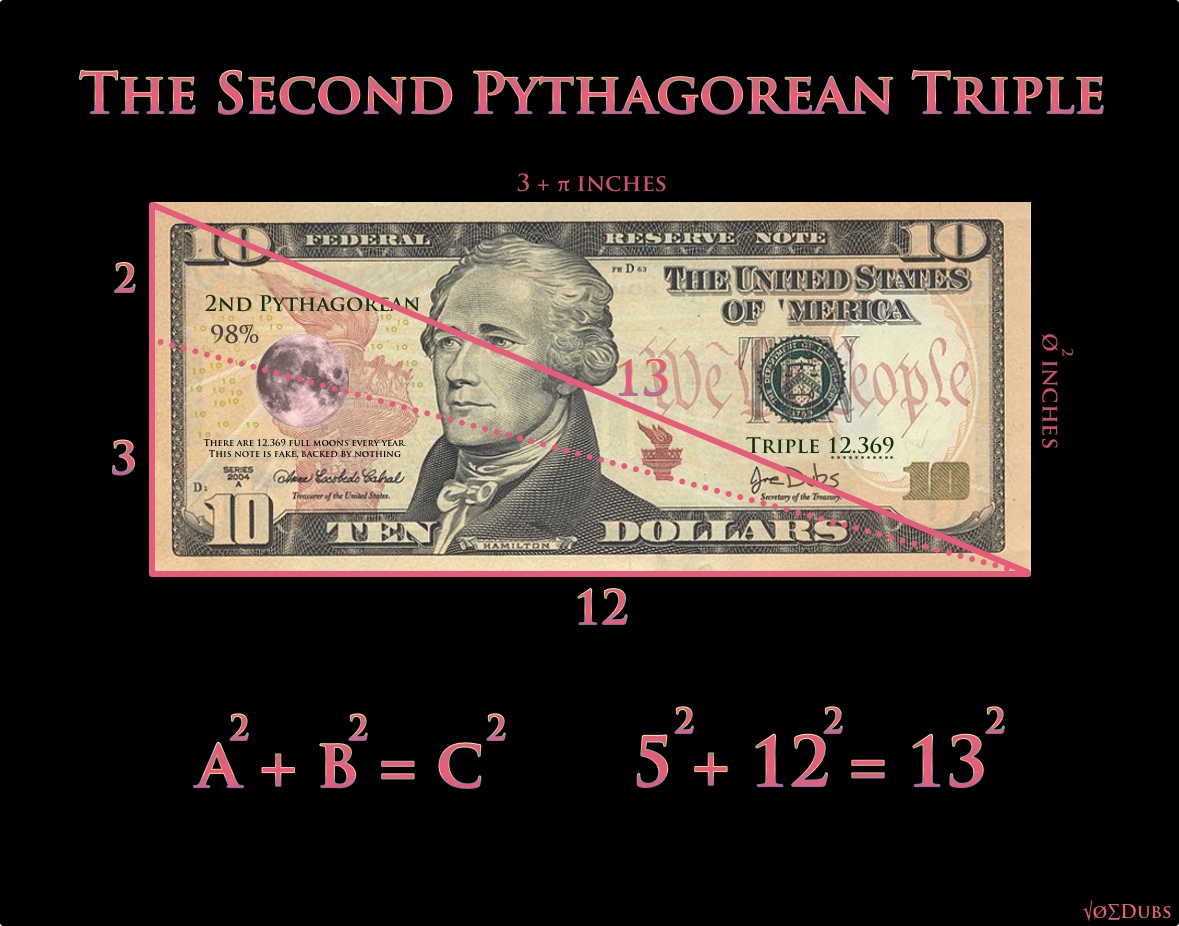Square the Circle with Earth and Moon

When we compare the size of Earth and Moon strange geometric synchronicities appear. The most fascinating of all is the ancient philosophical concept of ‘squaring the circle‘, that is drawing a square with the same area as that of the circle. You can also ‘square the circle’ with equal perimeters, which is what the Earth-Moon system do, to a very high degree of accuracy (99.97%). The Earth and Moon’s diameters can be described as a simple ratio, 11:3, when comparing one to another. It turns out that this ratio is the solution to ‘squaring the circle’ (of equal perimeter). The Moon describes a circle that has the same circumference as the square’s perimeter that surrounds Earth. This fact was discovered or rediscovered by the late and great John Michell. The magic number found in these geometries is 273, or more specifically 2732. I…


